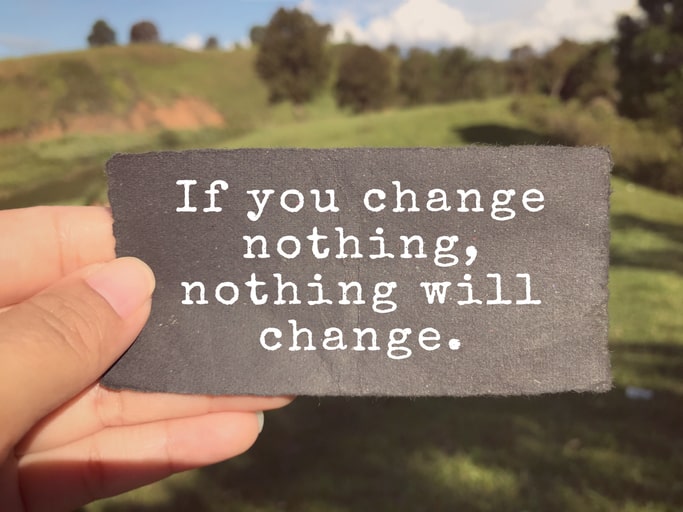Throughout our careers we may be recognized and rewarded for tasks we dislike doing and bring out the worst in us. Our ability to discern between what we’re good at and enjoy becomes blurred by the adrenaline and dopamine rush that comes from accomplishing and pleasing others.
It’s when you stop “doing” that you can witness the impact this behavior has on you.
When you hit the pause button before acting on your impulses, you create the space needed to detect patterns and triggers that are causing you stress. By managing how you react and respond to others, you can be more direct about your priorities and aspirations. If you’ve lost sight of your career goals or are unsure of what you value most, read this article to gain clarity and try out this exercise to enhance your approach.
If you struggle with the vicious cycle of always “doing,” you’re not alone.
The only way to combat this cycle is to face it and work through it. By taking ownership of your career, you can lead your own development path. Prioritize yourself around what you want to do and reduce activities that no longer serve you. Rather than complaining about or trying to change others, use your determination to activate your best and boost how you show up.
When you are self-led, you take your power back. Here are five Ps to help you shift your mindset and approach.
Affirm, I am committed to being:
Purposeful.
We all have a core motivation, sometimes hidden, that drives our behavior and how we view the world. One of my favorite tools to uncover them is the iEQ9 Enneagram Assessment. Regardless of the situation, you can be purposeful in everything you do. For example, if you like to be creative, it doesn’t matter what task you’re handed. Follow the guidelines and parameters but have fun within that framework. As the infamous saying from Stephen Anderson goes, “when everyone zigs, zag.” Don’t let others zap your energy.
Present.
No matter the activity, enjoy being in it. Ground yourself in what you’re doing. Refrain from starting more than one thing in each moment. Embrace a “learn as you go” operational mode. Be in the process and limit your expectations of others. Join conversations as your whole self – mind, body, and heart – focusing entirely on the interaction. This means no multitasking and being open to other points of view. Make an effort with how you present yourself in attire and body language to enhance all the elements of the experience.
Patient.
Patience is rooted in compassion and kindness. Give yourself and others that gift. We expect everything yesterday. Build in “YOU” time by buffering and maintaining boundaries. Set expectations realistically and finish one thing before moving on to the next. When communicating with others, remember some folks may need to think through things to formulate their thoughts and responses. Allow another person to speak freely, where you just listen. If you release your need for immediacy, you may be pleasantly surprised at the result.
Productive.
As Tony Robbins says, “Energy flows where your attention goes.” To be productive, set intentional, realistic, time-bound goals based on what you want to achieve. When you enjoy what you’re doing, you accomplish more. Being in the “flow” provides an optimal experience. So, the more you align what you do with your preferences, the happier you will feel. Take it a step further and elevate your executive presence and amplify your communication approach as you gain momentum.
Positive.
Having a positive outlook allows you to have a healthier mindset. To foster relationships and build trust, acknowledge and welcome a diverse set of viewpoints and styles. Remember to say “thank you” authentically to others. Not only will you uplift other people, you, in turn, will feel better too. It’s never too late to start living the attitude of gratitude. We can forget what our true priorities are in life when we get hyper-focused on one thing. If you feel off track, here are some tips for reconnecting with yourself through journaling.
Take one step each day.
To start, put together a career strategy to stay focused on your ambitions. This organized document helps you visualize and articulate your goals in a concise and systematic manner. From there, you can match your preferences and core motivation to your work and to-do list, limiting the number of things that stress you out.
Learning can be fun.
Self-leadership is all about getting to know yourself better and applying that knowledge to how you act, think, and feel. To uncover your core motivation, hidden triggers, and preferences, consider taking an online assessment like the MBTI® and Enneagram. With a certified practitioner like me, you can apply your insights to improve your communication, manage your career, handle stress, and make effective decisions. Are you interested in a self-led course? Watch this two-minute video and reach out to have me show you the behind-the-scenes. It would be a privilege to work with you on your career growth plans.

